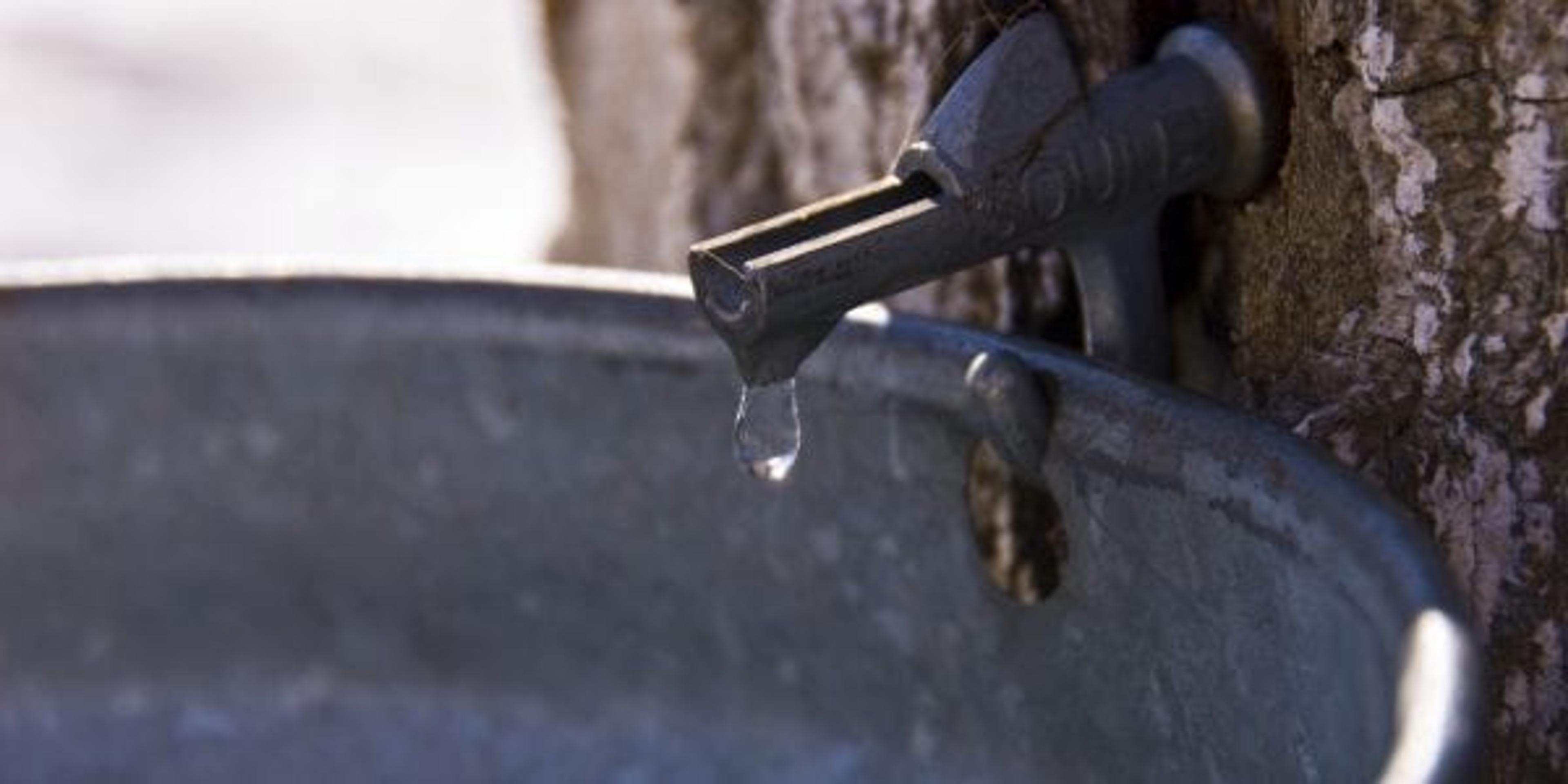The Sweet Story of Michigan Maple Syrup

Julie Bitely
| 3 min read

Would pancakes even be a thing without syrup?
The sweet, sticky substance makes the breakfast staple infinitely better and can also be used in many baked goods or as an ingredient in sweet and savory marinades.
Michigan’s maple syrup production goes into overdrive during the month of March, with many events and festivals devoted to the laborious process and resulting bottles of amber-colored sweetness.
Here’s a look at how much maple syrup Michigan produces as a state, how it’s made and where you can celebrate it.
Where Michigan Ranks
According to the Michigan Maple Syrup Association, Michigan ranks fifth in maple syrup production in the United States, averaging about 90,000 gallons per year and contributing nearly $2.5 million to Michigan’s economy. There are about 500 commercial maple syrup producers in the state, with many more hobbyists and people who make their own syrup at home.
It takes about 40 gallons of maple sap to make one gallon of maple syrup, which explains why demand often outpaces supply.
When and How Syrup is Made
Maple syrup is made from the sap of the sugar maple tree. Stands of trees are known as a sugar bush and in Michigan, sap collection takes place between February and April, with southern portions of the state collecting earlier than the northern reaches of the Upper Peninsula.
The rapid temperature shifts that occur during a Michigan spring – cycling from freezing to thawing and back again – cause the sap to move within the sugar maple trees. It flows when the temperature rises above freezing and is collected via taps drilled into the trees.
Although different makers have different equipment and methods, the general process is the same to turn sap into syrup. Water is removed from the sap through a process of heating and evaporation until just the right amount of sugar remains. The resulting syrup is then filtered, bottled and either enjoyed or sold at local farmers markets or onsite in some cases.
Where to Find and Celebrate Michigan Maple Syrup
Two large-scale April festivals celebrate maple syrup season in Michigan. At the Vermontville Maple Syrup Festival, attendees can enjoy maple syrup exhibits and a pancake breakfast, along with many other events. At the Shepherd Maple Syrup Festival, visitors can tour the Shepherd Sugar Bush to learn more about the syrup production process, participate in the fest’s 5K walk/run and enjoy many other fun activities.
The Michigan Maple Syrup Association has three weekends planned to celebrate the sweet stuff’s harvest in Southern Michigan, Northern Lower Michigan and the Upper Peninsula on three consecutive weekends from mid- to late-March. Find the sugar bush closest to you here.
Enjoying Maple Syrup
Like all sweet treats, pure Michigan maple syrup can absolutely be included in a healthy diet. It’s fat-free and contains 15 grams of carbohydrates and about 50 calories per tablespoon. Maple syrup is also known to have a lower glycemic index, meaning that it doesn’t spike the blood sugar as high as fast as sweeteners like granulated sugar or corn syrups.
Use it sparingly to flavor your favorite breakfast foods or to add sweetness to other recipes. Pure maple syrup is preferred over commercially-made syrups containing high-fructose corn syrup or other processed sugars, said Grace Derocha, a registered dietitian and certified diabetes educator at Blue Cross Blue Shield of Michigan.
Read more about the nutritional composition of maple syrup and make these maple glazed spice nuts with your syrup stash.
Want more dietitian-approved recipes using maple syrup? Here you go:
Photo credits:
Feature image: Jim Sorbie





